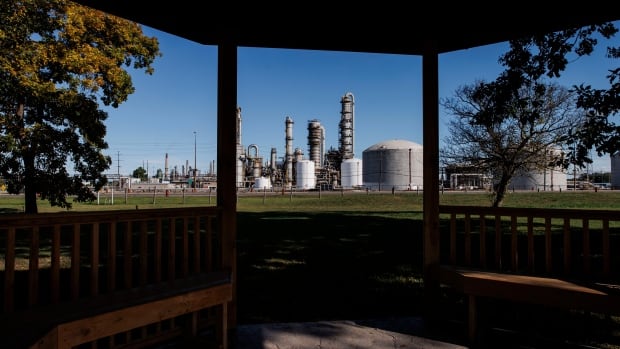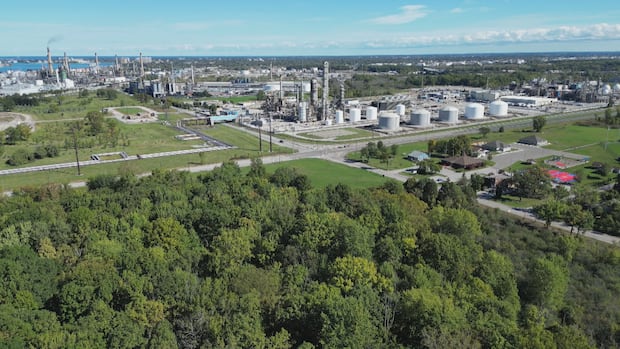INEOS says Ontario plant at centre of government orders to reduce toxic emissions to shut earlier than planned
A southwestern Ontario chemical plant under government orders to reduce emissions in the wake of health complaints by members of Aamjiwnaang First Nation will be decommissioned earlier than planned.
INEOS Styrolution previously said it would permanently close the plant before June 2026, but hadn’t ruled out restarting operations before that date.
In a news release on Thursday morning, the company said a restart wasn’t possible.
“Ultimately, the conclusion of the assessment was that temporarily restarting the site is not operationally feasible or economically justifiable,” said chief executive officer Steve Harrington.
Nearby Aamjiwnaang First Nation continues to be under a state of emergency that began in April after air monitors recorded excessive amounts of benzene earlier this year. Earlier this month, there was a partial evacuation of the First Nation after the company worked to remove benzene from a nearby tank.
Both the provincial and federal governments ordered the company to reduce emissions of the chemical, which is a byproduct from nearby oil refineries that’s shipped by pipeline to INEOS and stored in tanks.
Benzene is used to create styrene, which is then used for plastics.
WATCH | Why people in Aamjiwnaang left their homes over air quality concerns:
Aamjiwnaang First Nation near Sarnia, Ont.’s ‘chemical valley’ is undergoing a partial evacuation over spiking benzene levels. About 100 members were advised to leave this week as chemical company Ineos Styrolution removes benzene from a nearby tank.
INEOS previously disclosed that it could cost up to $50 million to meet the new government regulations on emission levels.
The company did not give a specific date for decommissioning the Sarnia plant, but said it expects to complete the process early in the fourth quarter of 2025.
“We are now focused on conducting a safe, responsible and compliant closure process, and supporting our employees, contractors, customers and partners, including offering transition support for impacted employees,” said Harrington.
The operation employs about 80 people and hires contractors in the area for work onsite.
The facility dates back to 1943, with a number of different owners taking over the plant. INEOS took over the operation in 2011.
Concerns about air pollution in the area of southwestern Ontario dubbed Chemical Valley go back decades. And earlier this year, high benzene levels prompted Aamjiwnaang First Nation — which neighbours a petrochemical facility — to declare a state of emergency. Last week, some members of the First Nation left their homes due to an expected spike. Benzene, however, isn’t only found near industrial areas. CBC’s Chris Ensing explains what this chemical is and how much long term exposure is considered safe.



